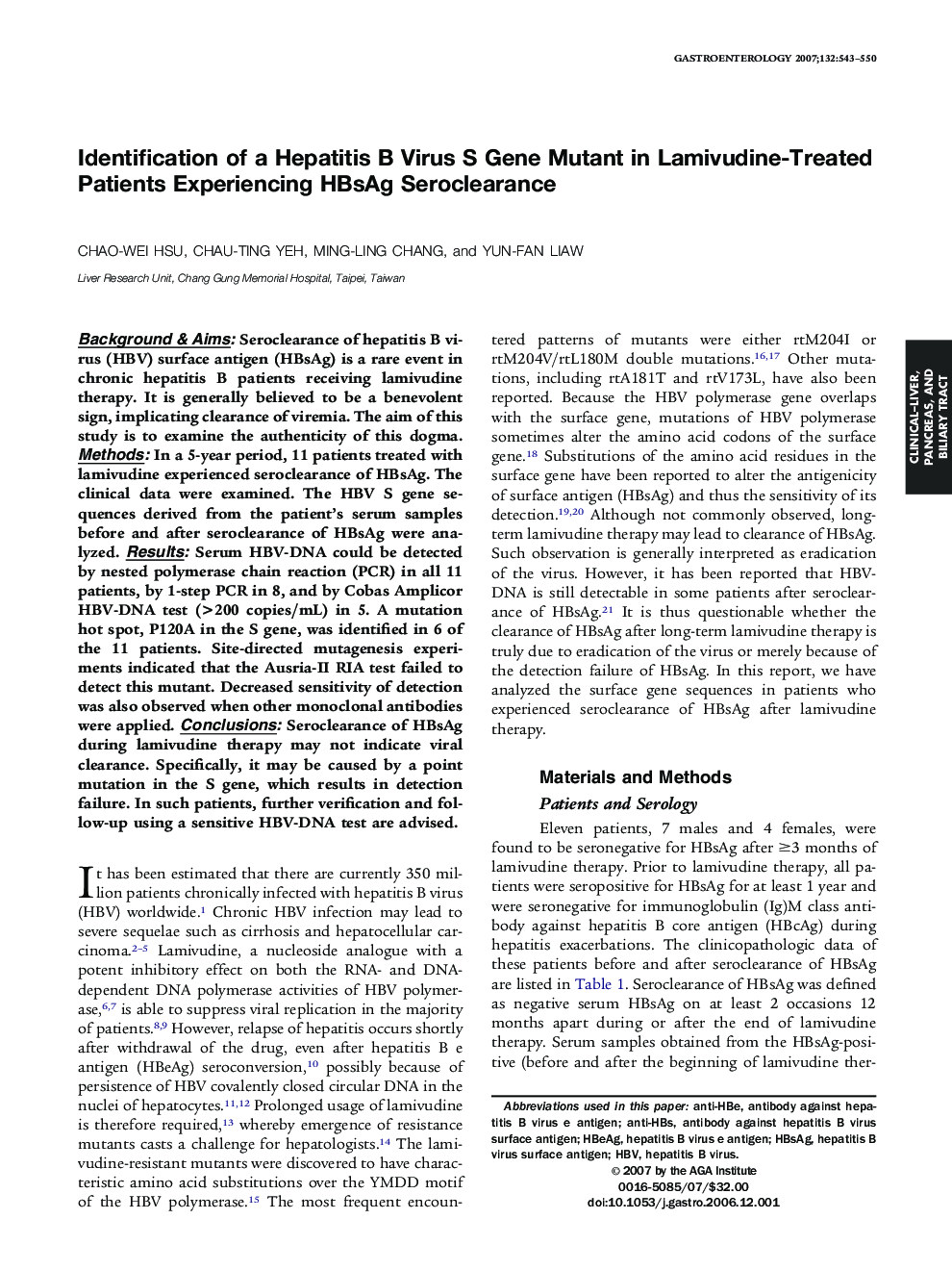| Article ID | Journal | Published Year | Pages | File Type |
|---|---|---|---|---|
| 3298619 | Gastroenterology | 2007 | 8 Pages |
Background & Aims: Seroclearance of hepatitis B virus (HBV) surface antigen (HBsAg) is a rare event in chronic hepatitis B patients receiving lamivudine therapy. It is generally believed to be a benevolent sign, implicating clearance of viremia. The aim of this study is to examine the authenticity of this dogma. Methods: In a 5-year period, 11 patients treated with lamivudine experienced seroclearance of HBsAg. The clinical data were examined. The HBV S gene sequences derived from the patient’s serum samples before and after seroclearance of HBsAg were analyzed. Results: Serum HBV-DNA could be detected by nested polymerase chain reaction (PCR) in all 11 patients, by 1-step PCR in 8, and by Cobas Amplicor HBV-DNA test (>200 copies/mL) in 5. A mutation hot spot, P120A in the S gene, was identified in 6 of the 11 patients. Site-directed mutagenesis experiments indicated that the Ausria-II RIA test failed to detect this mutant. Decreased sensitivity of detection was also observed when other monoclonal antibodies were applied. Conclusions: Seroclearance of HBsAg during lamivudine therapy may not indicate viral clearance. Specifically, it may be caused by a point mutation in the S gene, which results in detection failure. In such patients, further verification and follow-up using a sensitive HBV-DNA test are advised.
